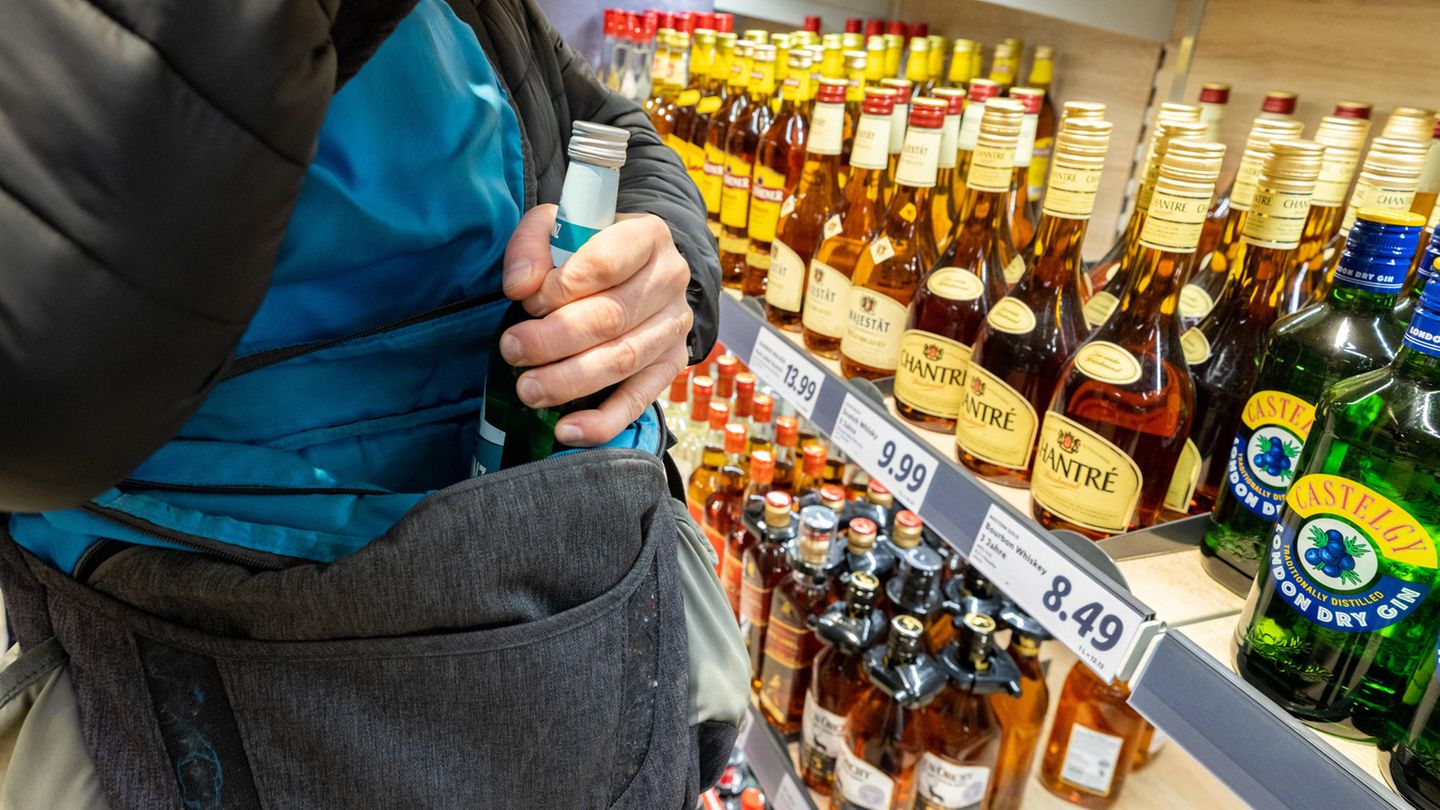A recent study by the EHI trade institute has caused astonishment at the high level of damage caused by shoplifting and the sharp increase in cases. But the study is being overinterpreted.
The renowned trade institute EHI publishes a study on “inventory discrepancies” every year. Behind this cumbersome term lies the loss of goods that are lost in retail every year: through theft, breakage and spoilage. This year, the figures were striking: “In 2023, the already high level,” says the press release on losses due to shoplifting, “has increased by another 15 percent.”
The study author Frank Horst is quoted as saying that after Corona, a turning point has now been reached “at which the increase in shoplifting is taking on a special dimension and requires special attention.” What is the truth behind this alarm call?
Has the number of shoplifting incidents increased?
Yes and no. First, let’s look at the numbers we know for sure. These are the official crime statistics. According to them, the number of reported shoplifting cases rose to 426,000 last year, which is almost a third more than before Corona. A significant increase.
However, the number is significantly lower than what we have seen before: there was a peak in 1997 with 678,000 reported cases, almost two thirds more than today. Since then, the number has slowly declined. In 2002, there were 559,000 reports, and in the year before Corona, there were 326,000 reports. So we have significantly more registered shoplifting cases than before Corona. Compared to previous years, however, the numbers are still within the range.
However, the reported thefts only show a small part of the problem. Not all shoplifters are caught. Quite the opposite.
How often does something get stolen without us noticing?
We cannot know that, of course. The researchers at EHI are therefore trying to estimate it. They are asking retailers how much goods are lost – and why. The result for last year: goods worth 4.8 billion euros are missing. Estimated share of stolen goods: 4.1 billion euros. According to estimates by the companies surveyed, just over two thirds of the thefts are said to be the work of customers: 2.8 billion. The rest is therefore stolen by employees or suppliers.
The result of the study: “The average damage caused by all reported thefts and the damage determined by inventory in retail shows that around 24 million shoplifting incidents … remain undetected each year.”
There are a lot of estimates in this statement. Even the value of all the missing goods contains inaccuracies. It is really tricky to estimate the exact amount and cause of thefts. How much was stolen – and above all by whom, i.e. customer, seller or supplier – is a rough estimate. Some of the companies’ estimates are based on “good data”, as study author Frank Horst explained when asked by the star explained, some of their estimates are based on “gut feeling”.
In addition, companies tend to have an interest in downplaying theft by their own staff. But as more and more employees sell and accept goods on their own, more and more opportunities arise to steal money.
The problem with the dark figure
Let’s assume the estimate is correct. Let’s say there are 24 million shoplifting incidents. If only 426,000 are reported, the number of unreported cases is enormous: In 55 out of 56 cases, the theft goes unnoticed. Only when the retailer takes inventory does he notice that something is missing.
This also means that if the store detectives work just a little better, the number of reports will skyrocket. If they missed only 54 of 56 thefts instead of 55, there would be twice as many reports.
It is therefore difficult to determine from the crime statistics whether customers are stealing more or not. And certainly not whether this has anything to do with inflation. It is more likely that shops are doing more or less to catch shoplifters. Because that has by far the greatest influence.
Frank Horst, the author of the study, says in response to the objection: the expenditure on store detectives has remained constant, so there is no more surveillance than before. He therefore assumes that if more shoplifters are caught, there is actually more theft.
However, there has been continuous investment in surveillance technology and theft protection for years. And a lot of changes have been made during Corona. Perhaps the measures are simply more effective.
Why do people steal?
The news agency DPA quotes the study’s author Frank Horst as saying: “Due to the price increases, some people have got into financial difficulties and have stolen more often.” This cannot be deduced from the study.
Upon request of the star He explains that he concludes that this is because more meat, butter and cheese are being stolen. But firstly, this doesn’t necessarily have to do with financial hardship. It could simply be customers being annoyed that some products have become particularly expensive. And secondly, a new pattern of theft is emerging due to the new trend towards self-service checkouts.
What is proven to be increasing is “serious shoplifting”, in which display cases or other protective devices are broken into and valuable items stolen. Since 1997, the number of reported serious thefts has quadrupled – there are now over 27,000. Around a third of these are committed by organised gangs who work in a division of labour and, according to the EHI study, typically steal goods worth between 1,000 and 2,000 euros.
How has the damage caused by shoplifting developed?
According to EHI statistics, the damage caused by shoplifting has increased continuously in recent years. Within ten years it rose from 2.1 billion euros to 2.8 billion. These are absolute figures, of course. But we have inflation year after year, sometimes more, sometimes less.
If we take this effect into account, the loss has only increased by 0.2 billion. If we compare the total loss of goods (i.e. the total “inventory difference”), it has actually decreased by 0.1 billion in ten years, adjusted for inflation. And as already mentioned: the share of shoplifting in the total loss is an estimate.
theft
A restaurateur reveals: This is what Germans steal from restaurants
Adjusted for inflation, the increase in damage reported for 2023 is also less impressive: then about 9 percent of the reported 15 percent remains. Given the uncertainties in this figure, is this really “a turning point”?
When asked, Frank Horst sticks to his argument. His argument is that the change in the damage caused by shoplifters is significantly higher than in previous years’ studies. And can therefore be clearly deduced from the figures.
How good are the study’s estimates?
The study itself is actually refreshingly objective. “There are significant differences in the assessment depending on the industry,” it says. “The deviations within an industry also show how subjective the assumptions about the frequency and extent of shoplifting are.”
Author Frank Horst makes it clear in the study that everything is a rough estimate. As is often the case, the results are presented in the press release without these restrictions.
Conclusion: What can we conclude from the study?
Despite all the uncertainties, the figures from the EHI study are interesting. One thing is certain: there is a high number of unreported cases of shoplifting. This is why the official crime statistics do not adequately reflect reality, and the EHI study is a valuable addition.
Since the end of the 1990s, the police have registered fewer and fewer shoplifters. However, the persistently high loss among retailers suggests that shoplifting is a fairly stable phenomenon. Recently, fewer and fewer thieves have been caught or reported.
And the retail study gives plausible reasons for this: During this phase, retailers extended their opening hours without hiring more store detectives. They saved on staff, which means that sales staff now have to look after more and more space. After Corona, it was also difficult to hire enough staff again.
But one thing is also clear: fewer staff also makes it easier for employees to steal something. The question remains why this is not reflected in the figures. Companies estimate that the proportion has been declining significantly for years.
Conclusion: Given the high number of unreported cases, it remains difficult to make general statements about shoplifting based on short-term changes in the statistics. This applies to the official crime statistics as well as to the EHI study.
Source: Stern




